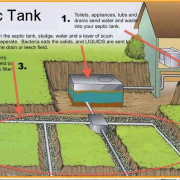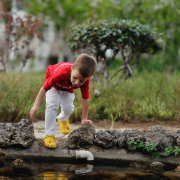LWDD Governing Board
1. Who can run for a position on the Board of Supervisors?
A candidate must be at least 18 years of age, a citizen of the United States of America and a resident of the State of Florida. The candidate must be one of the following: (a) owner of property, (b) be the spouse of a landowner, (c) the authorized representative of a Corporation, Partnership or Limited Liability Company, owning property located within the Lake Worth Drainage District (LWDD) boundary at the time of the election. Candidates in election sub-districts 3, 4, & 5 must reside in the sub-district they are a candidate for at the time of the election. Candidates in election sub-districts 1 and 2 do not have residency requirements for the election sub-district they are a candidate for at the time of the election.
2. Who can vote for candidates to the Board of Supervisors?
Any landowner, or the legal representative of a Corporation, Partnership or Limited Liability Company, owning property located within the boundary of LWDD is entitled to vote; except for: (a) exempted lands which LWDD does not levy assessments, (b) lands that are not currently subject to the LWDD levy of assessments and (c) lands for which assessments have not been paid for the previous year.
3. What authority governs the LWDD election process?
LWDD is an independent special district. It is created by legislation that calls for a Board of Supervisors elected by the landowners within its boundary. Board Supervisors are authorized to determine, set, and levy a uniform annual acreage assessment upon each acre or fraction thereof on property within LWDD’s boundary. Assessments are levied to maintain, preserve, repair, and restore existing and future LWDD assets. A complete copy of the most recent LWDD Enabling Act, Chapter 2009-258 Laws of Florida can be found at www.lwdd.net.
4. Why does LWDD use the one-acre one-vote method?
LWDD’s annual assessment is a non-ad valorem fee for each acre or portion thereof of land. Landowners pay a share based on the amount of land receiving drainage services. It is common for single purpose drainage districts to elect their board members by a one-acre one-vote method. This provides landowners equal participation with the assessment they pay. Because LWDD only provides drainage services it is reasonable that the number of votes allotted to a landowner be comparable to the amount of property receiving drainage services.
5. Why are there five election sub-districts?
In 1990 the Board of Supervisors was expanded from three members to five members. At that time the five election sub-districts were identified. Election sub-districts 3, 4, & 5 are generally located east of the Florida Turnpike. Election sub-districts 1 and 2 are generally located west of the Florida Turnpike. The purpose of the change was to ensure a more equitable representation on the board from individuals throughout the 200 square miles that make-up the LWDD boundary. Link: Election Sub District Map.
6. Do you have a process for absentee or mail-in ballots?
No, per the LWDD Enabling Act, Chapter 2009-258 Laws of Florida, casting of votes must take place in person on the day of the Landowners meeting. However, eligible landowners who cannot attend the Landowners meeting may transfer their voting rights to a representative by proxy who will cast their vote for them at the Landowners meeting. The proxy form allows the landowner to assign their voting right to another individual who will vote in their stead at the Landowners meeting. The official proxy form can be found at www.lwdd.net.
7. I own a condominium. Can I vote in the LWDD Board of Supervisors elections?
Yes, owning a condominium within LWDD’s boundary qualifies you as a landowner.
8. I rent an apartment and live fulltime within LWDD’s boundary. Can I vote in the Board of Supervisors elections?
No, although you live within LWDD’s boundary you are not considered a landowner.
9. I am a joint owner of property. Can all joint owners of the same property vote in the election?
No, only one landowner may vote for each eligible parcel of land. Therefore, regardless of the number of joint owners, together they are entitled to only one ballot.
10. I own two parcels within LWDD’s boundary. One parcel equals 1.01 acres, and the second parcel equals .50 acres. How many votes can I cast?
Each acre, or any fraction thereof, of a parcel in LWDD shall represent one share and the landowner shall be entitled to one vote per share. Acre size is quantified to two decimal places. Therefore, your 1.01-acre parcel and .05-acre parcel would grant you 3 votes.
11. Who runs the Landowners meeting?
The landowners when assembled elect a Chairperson to preside at the meeting. The Secretary of the LWDD Board of Supervisors serves as the Secretary for the Landowners meeting.
12. What other items of business take place at the Landowners meeting?
Staff reports and presentations on the operations of LWDD during the past year are given. Also, any topic which the board or landowners wish to discuss.
13. Can I ask questions or give public comment at the Landowners meeting?
Yes, the agenda will call for questions or comments from the landowners.






